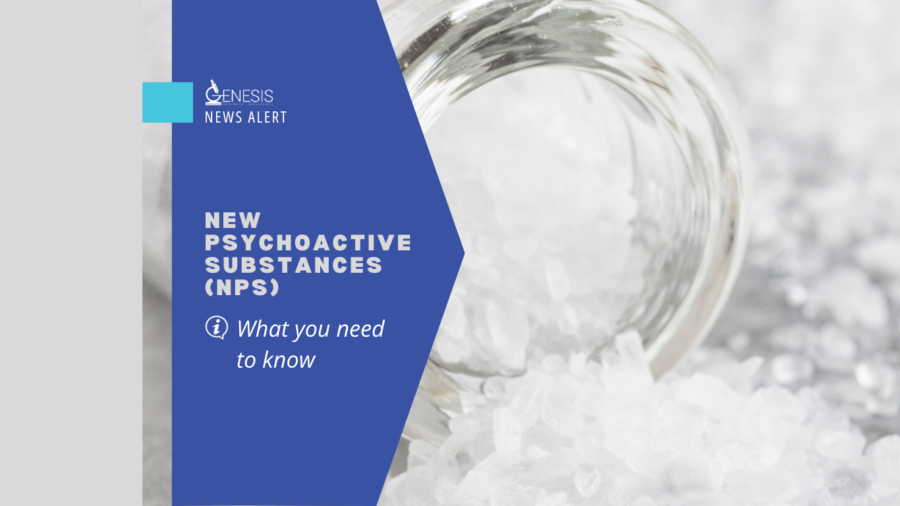New psychoactive substances or NPS have been known in the market by terms such as “legal highs”, “bath salts” and “research chemicals”. The United Nations Office on Drugs and Crime (UNODC) uses the term “new psychoactive substances (NPS)” which are defined as “substances of abuse, either in a pure form or a preparation, that are not controlled by the 1961 Single Convention on Narcotic Drugs or the 1971 Convention on Psychotropic Substances, but which may pose a public health threat”. The term “new” does not necessarily refer to new inventions — several NPS were first synthesized decades ago — but to substances that have recently become available on the market.1
One of the biggest misconceptions about NPS is that they are safer than established illicit drugs. Even though they are sometimes advertised as legal, this doesn’t mean they are safe. Given how rapidly new drugs are emerging, it is difficult to know the common effects of these drugs and what dose causes what effects.2
The rapid emergence of a large number of NPS on the global drug market poses a significant risk to public health and a challenge to drug policy. Often, little is known about the adverse health effects and social harms of NPS, which pose a considerable challenge for prevention and treatment. The analysis and identification of a large number of chemically diverse substances present in drug markets at the same time is demanding. Monitoring, information sharing, early warning and risk awareness are essential to respond to this situation.1
Safety data on toxicity and carcinogenic potential of many NPS are not available or very limited, and information on long-term adverse effects or risks are still largely unknown. Purity and composition of products containing NPS are often not known, which places users at high risk as evidenced by hospital emergency admissions and deaths associated with NPS, often including cases of poly-substance use.1
Different types of NPS substance groups can be accessed here on a reference provided by the United Nations Office on Drugs and Crime (UNODC) Early Warning Advisory on New Psychoactive Substances. From this website information for reported NPS such as known background information, chemical structures, adverse effects and other information is accessible.
Since NPS are not controlled under the International Drug Control Conventions, their legal status can differ widely from country to country. Up to 2022, 67 countries and territories have implemented legal responses to control NPS, with many having used or amended existing legislation and others having used innovative legal instruments. Several countries and territories where a large number of different NPS has rapidly emerged, have adopted controls on entire substance groups of NPS using a so-called generic approach, or have introduced analogue legislation that invokes the principal of “chemical similarity” to an already controlled substance to control substances not explicitly mentioned in the legislation. At the international level, up to March 2022, the Commission on Narcotic Drugs decided to place 71 NPS under international control. These control measures have to be implemented into the national legal framework of each country. To find more information on the various legal responses in place around the world, click here.3
“As the US and many parts of the world continue to suffer from a worsening overdose crisis at a magnitude not seen before, there has been increasing concern about the quality of the illicit substance market and the emergence of NPS across all chemical classes. These include novel synthetic opioids, novel phenethylamines, novel psychedelics, and novel cocaine derivatives, all of which often possess greater potencies, exhibit varying pharmacologic effects, and are associated with increasing mortality.4
While the solutions around curbing the overdose crisis continue to be debated, one of the most important steps that all clinicians can take is to educate themselves on what the current illicit substance market landscape looks like, the underlying mechanisms that different substances elicit, and the physiologic effects (including drug-drug, drug-disease interactions) induced by those substances. This information can prepare clinicians to properly educate patients and, ideally, minimize potential toxicities caused by a lack of such understanding and knowledge.4
At Genesis Reference Laboratories, we access trends of emerging novel emerging substances and incorporate these findings into our testing menus. Through analysis of regional, national, and international NPS legal and toxicology data, our goal is to offer our clients a testing menu that reflects current and emerging drugs of interest.
For more information on emerging substances of abuse and how Genesis can help you with your drug testing needs, please reach out to your local Genesis representative or call (844) 510-0194 to learn more about our services.

